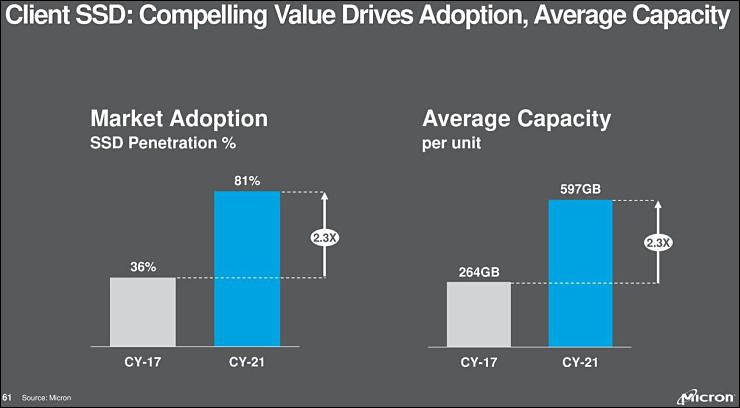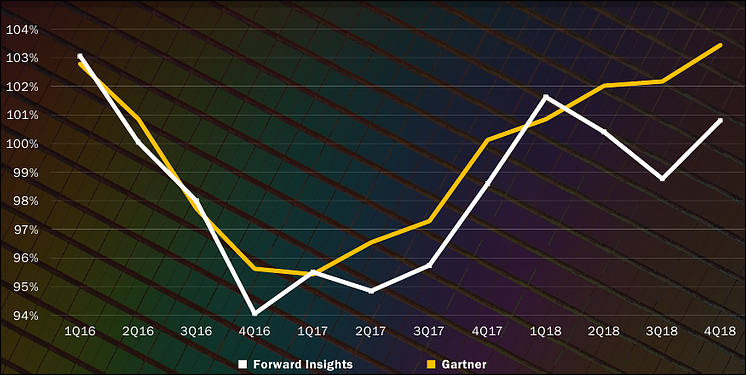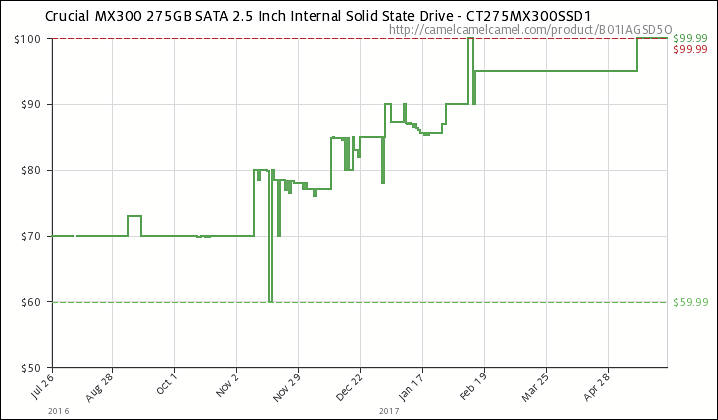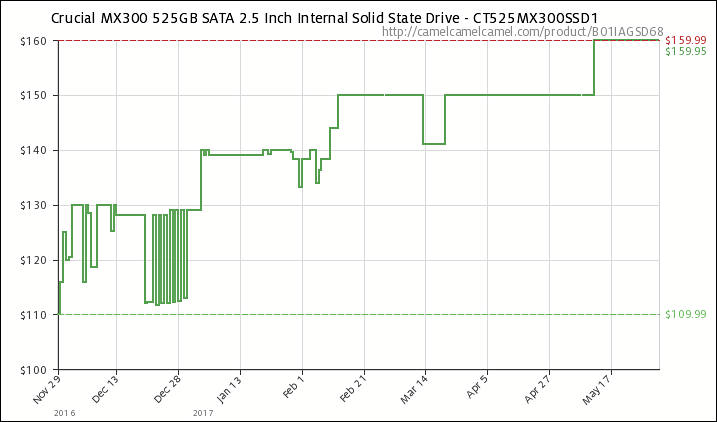
-
More good news
NAND flash prices will continue to drop in the third quarter of 2018 as suppliers scale up their 3D NAND chip output.
NAND flash demand has not been strong enough to digest the industry's capacity, which will likely persist through the third quarter.
Judging from the continued oversupply, the sources expressed concerns NAND flash prices will still be on their downward trend in the second half of 2018. The market oversupply will become severe between the fourth quarter and the first quarter of 2019, when seasonal factors are taken into account.
-
NAND flash prices will rebound in the third quarter if prices "fall extremely" in the second quarter, Chang noted. Otherwise, NAND flash prices should register only flat growth sequentially in the third quarter,
As chip firms improve gradually their 3D NAND production yield rates NAND flash prices will trend downward in the long term. NAND flash prices will fall to as low as US$0.20 per Gb when 3D NAND production becomes mature.
-
Bad news again
NAND flash prices started falling at the end of 2017, but the price drops have slowed to about 10% in the second quarter, said the sources. With end-market demand picking up on seasonality, the market oversupply will be less significant. NAND flash prices may continue to trend downward but at a much slower pace in the third quarter, with a possibility that prices may stop falling.
SSD prices had fallen about 50% from November 2017 to the end of the first quarter, Phison Electronics chairman Khein Seng Pua remarked recently. Prices are likely to rebound before or after the Computex 2018 trade show, and the supply of NAND flash will become tight again.
Client SSDs are expected to transition from SATA to PCIe NVMe in 2018.
-
https://www.personal-view.com/talks/discussion/19691/2tb-micron-1100-2.5-ssd-for-only-268#Item_1
$268 it is, 223 EUR. Very close to target.
-
My solution is a FreeBSD NAS - 8 8T drives in raid6 (raidz2) with 2 1T drives for cache (l2arc) connected by 10gE. It's more than fast enough for just about anything that I do (including 4k prores). The NAS sits in another room where the sound of a pile of hard drives won't bother me. If you don't want to deal with FreeBSD directly, you can use FreeNAS which has it under the hood, but gives you a nice GUI front-end for it. It's not an extremely cheap solution, but it is very effective.
On the other hand, there was a deal posted here for Micron 2T SSD's for pretty cheap - I don't remember if it was 4T worth for less than 400 euros, but if not, it was still pretty close.
-
Got it.
One other possible solution I personally saw was the guy who just made separate box with HDDs raid and connected it via 10 Gbit port (actually many will do fine even with 1Gbit).
Using pair of such cards https://www.amazon.com/XG-C100C-Network-Adapter-Single-RJ-45/dp/B072N84DG6/
-
Just set it to shut off after certain period of time. And get other HDD.
Can make stuff in https://www.autoitscript.com/site/autoit/ (or similar software) to adapt your PC to any task you have ahead. I am not talking about smaller things.
Can check video from editor of Linus Tech Tips
-
Well, good 5400 HDD is almost silent with proper case.
As I said, writing simple auto script you can move stuff to edit SSD (and back with one click) and keep HDD with auto-off.
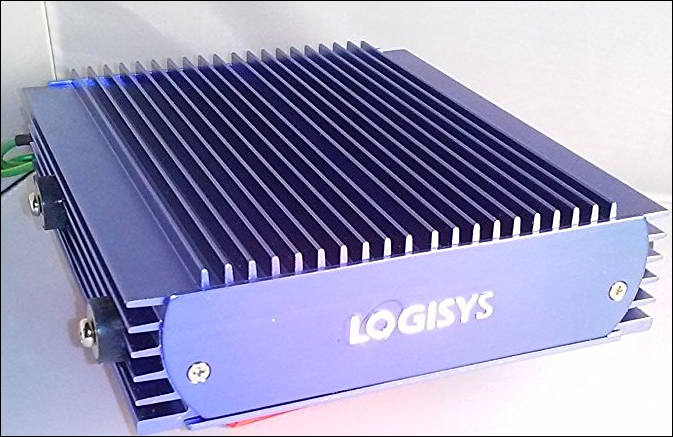
Or can use this. :-)

 sa3214.jpg673 x 437 - 56K
sa3214.jpg673 x 437 - 56K -
And why you need 4TB SSD?
Even today on AMD platform you can use https://www.personal-view.com/talks/discussion/19701/fuzedrive-ryzen-friendly-soft-for-dram-ssd-or-optane-cache-#Item_4
If you work with H.264 or such just pair HDD with Optane 32GB https://www.amazon.com/Intel-Optane-Memory-Module-MEMPEK1W032GAXT/dp/B06XSXX3NS/ otherwise with newer 118GB https://www.amazon.com/Intel-Optane-800P-118GB-XPoint/dp/B078ZK1ZLL/
Thing will be absolutely unmatched.
In reality with proper automatisation any 240GB SSD will do as edit drive.
-
NAND flash prices are still under downward pressure due to oversupply, Transcend commented.
More good.
-
SSD suppliers have recently cut prices to promote their 64- and 72-layer 3D devices, which is expected to accelerate the adoption of SSDs in notebooks
Contract prices for mainstream SSD products will continue their downward trend in the second quarter to reflect a slight oversupply. The continued price decline is expected to drive greater SSD adoption in notebooks in 2018.
Something good.
-
NAND flash contract prices for the third quarter rose by up to 6% sequentially, said DRAMeXchange, adding that the prices are approaching the highest levels that OEM factories can afford. Prices for the fourth quarter are expected to remain flat or rise only slightly on quarter, as chipmakers are capable of mass producing 64- and 72-layer 3D NAND devices, DRAMeXchange continued.
-
2017 final results
- NAND sales are around $50 billions
- YoY rise is 44%
- But at the same time one NAN chip price rose 38%
-
And here are fake hackers
Toshiba decided to shut down the production for 3-6 weeks to deal with the hacking, but production has now returned to normal, said the sources, adding that the suspension resulted in reduced NAND flash production nearly 100,000 wafers.
The world's NAND flash market was supposed to see improvements to the undersupply situation starting the fourth quarter, but the Toshiba fab shutdown has now created uncertainties, the sources indicated.
Many downstream distributors originally believed that NAND flash prices had been inflating excessively and would see correction starting the fourth quarter of 2017, according to the sources. However, with the Toshiba incident, such a price correction may not occur.
This is how capitalist are doing their stuff :-)
-
Major chip providers Samsung Electronics and SK Hynix have recently adjusted upward their prices for eMMC, eMCP and SSD devices by 10-20% to reflect their tight supplies, said Pua. Meanwhile, Toshiba and Micron Technology have also informed their customers that the supply of their NAND flash chips will be reduced in the third and fourth quarters.
-
WDC propose that NAND price increase continue at least to mid 2018 and hopefully (for them) much longer.
-
Optimism
There will be a severe shortage of NAND flash memory chips in the third quarter of 2017, and the tight supply will persist through the fourth quarter, according to Taiwan-based Innodisk, which develops and manufactures industrial-class storage products.
The ongoing tight supply of NAND flash chips was caused by chipmakers' transition to 3D NAND memory, said Innodisk. Yield rates for chipmakers of 3D NAND technology required for 1Xnm and sub-1Xnm process manufacturing remain unstable.
-
Issues continue
The NAND Flash market remained tight in the first quarter of 2017 as it had been in the preceding quarter, according to DRAMeXchange. Despite seasonality, average contract prices for NAND flash chips surged 20-25% sequentially in the first quarter.
Howdy, Stranger!
It looks like you're new here. If you want to get involved, click one of these buttons!
Categories
- Topics List23,992
- Blog5,725
- General and News1,354
- Hacks and Patches1,153
- ↳ Top Settings33
- ↳ Beginners256
- ↳ Archives402
- ↳ Hacks News and Development56
- Cameras2,367
- ↳ Panasonic995
- ↳ Canon118
- ↳ Sony156
- ↳ Nikon96
- ↳ Pentax and Samsung70
- ↳ Olympus and Fujifilm101
- ↳ Compacts and Camcorders300
- ↳ Smartphones for video97
- ↳ Pro Video Cameras191
- ↳ BlackMagic and other raw cameras116
- Skill1,960
- ↳ Business and distribution66
- ↳ Preparation, scripts and legal38
- ↳ Art149
- ↳ Import, Convert, Exporting291
- ↳ Editors191
- ↳ Effects and stunts115
- ↳ Color grading197
- ↳ Sound and Music280
- ↳ Lighting96
- ↳ Software and storage tips266
- Gear5,420
- ↳ Filters, Adapters, Matte boxes344
- ↳ Lenses1,582
- ↳ Follow focus and gears93
- ↳ Sound499
- ↳ Lighting gear314
- ↳ Camera movement230
- ↳ Gimbals and copters302
- ↳ Rigs and related stuff273
- ↳ Power solutions83
- ↳ Monitors and viewfinders340
- ↳ Tripods and fluid heads139
- ↳ Storage286
- ↳ Computers and studio gear560
- ↳ VR and 3D248
- Showcase1,859
- Marketplace2,834
- Offtopic1,320


